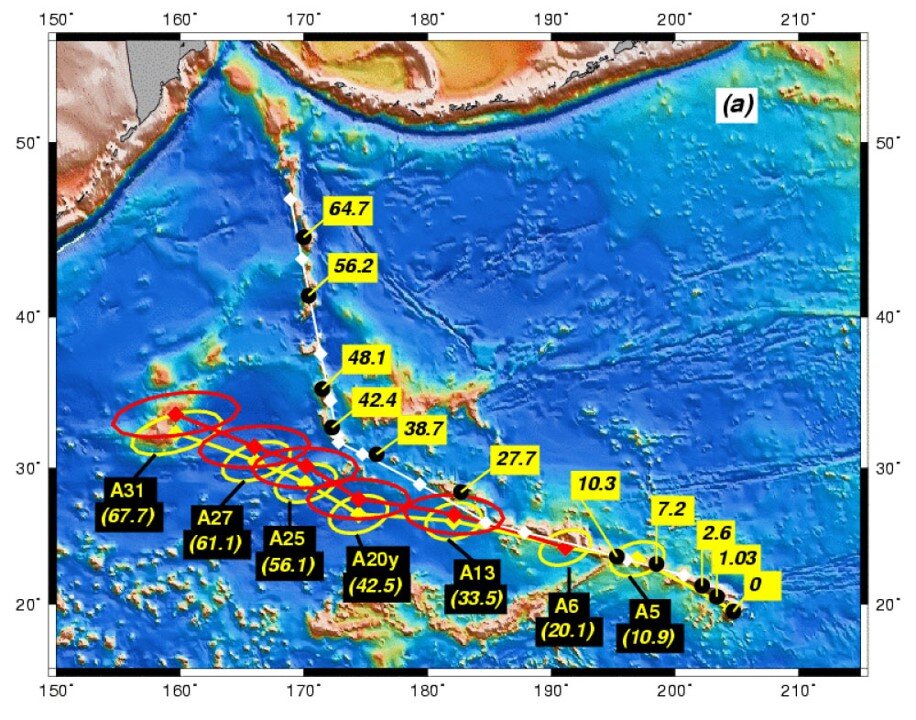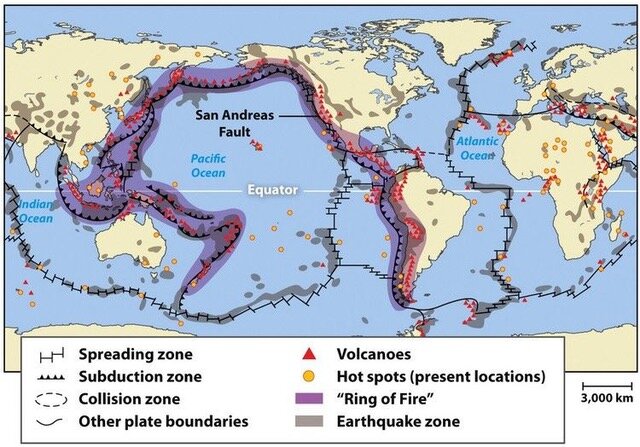Gillian Foulger on Explaining Intraplate Volcanism Without Mantle Plumes
Gillian Foulger is Emerita Professor of Geophysics at Durham University. She points out the lack of evidence in support of the mantle plume hypothesis and describes an alternative - the plate hypothesis. A key prediction of the plate hypothesis is that the lithosphere should be extending wherever we see intra-plate volcanism. She explains that many of the observations we already have can be reinterpreted as consistent with the plate hypothesis, and suggests new experiments that could clearly distinguish the competing hypotheses.
Listen to the podcast here or wherever you listen to podcasts.
Scroll down for illustrations that support the podcast. And add your comments at the bottom of the page.
Note - playing the podcast is not supported on Internet Explorer; please use any other browser, or listen on Spotify, Apple Podcasts, etc.
Podcast Illustrations
Hawaii and the Seamount Chain
The map shows the actual position and age (yellow boxes) inferred from the seafloor magnetic anomalies of the Hawaiian islands and the Hawaiian-Emperor seamount chain. The diamond-shaped points and ages (black boxes) are the positions of the islands and seamounts that would be expected if the source of volcanism was a fixed plume and the present-day locations were determined purely by motion of the Pacific plate. The red and yellow diamonds reflect uncertainty about the motion of the Antarctica plate used to determine the fixed frame of reference for the plume.
Raymond, C.A., Stock, J.M. and Cande, S.C., 2000. Fast Paleogene motion of the Pacific hotspots from revised global plate circuit constraints. In: M.A. Richards, R.G. Gordon and R.D. van der Hilst (Editors), History and Dynamics of Plate Motions. AGU Geophysical Monograph Series. AGU Geophysical Monograph, pp. 359-375.
The map shows that the western Pacific is bordered by subduction zones, with the Aleutian trench to the north, west Pacific subduction zones off the coasts of Japan and China to the west, and between Java and Samoa to the south. This results in a radial-outward extensional force on the west Pacific lithosphere.
Global map of the tectonic stress field induced by horizontal tractions derived from the history of subduction. The arrows show the relative strengths of the extensional (outward-pointing arrows) and compressional stresses (inward-pointing arrows). Hawaii (red circle) is located at a point where the extensional forces are equal in all directions. In the podcast, Gillian Foulger suggests this may be causing lithospheric extension in Hawaii, which, according to the plate hypothesis, would cause volcanism from melting in the upper mantle.
Lithgow-Bertelloni & Guyunn (2004), Origin of the lithospheric stress field, J. Geophys. Res., 109, B01408, doi:10.1029/2003JB002467
Yellowstone
The location and time progression of volcanism in the eastern Snake River Plain. The prevailing view is that this traces the path of the North American Plate over a hotspot or mantle plume, now centered below Yellowstone National Park.
Courtesy of Kevin Case
Plate Hypothesis Explanation
According to the plate hypothesis, the time-progression of east-west extension of the volcanism in the eastern Snake River Plain is explained by the progression of lithospheric extension. While the plume hypothesis explains the trail of volcanism by the motion of the North American plate over a hot spot, Gillian Foulger points to the lack of evidence for a hot spot, and suggests an upper mantle origin of the volcanism following waves of lithospheric extension.
Christiansen, Foulger, & Evans (2002), Upper mantle origin of the Yellowstone hotspot, GSA Bulletin, 114, 1245
Further Reading
mantleplumes.org This website contains a rich discussion of whether or not mantle plumes exist and includes links to the relevant academic literature.






